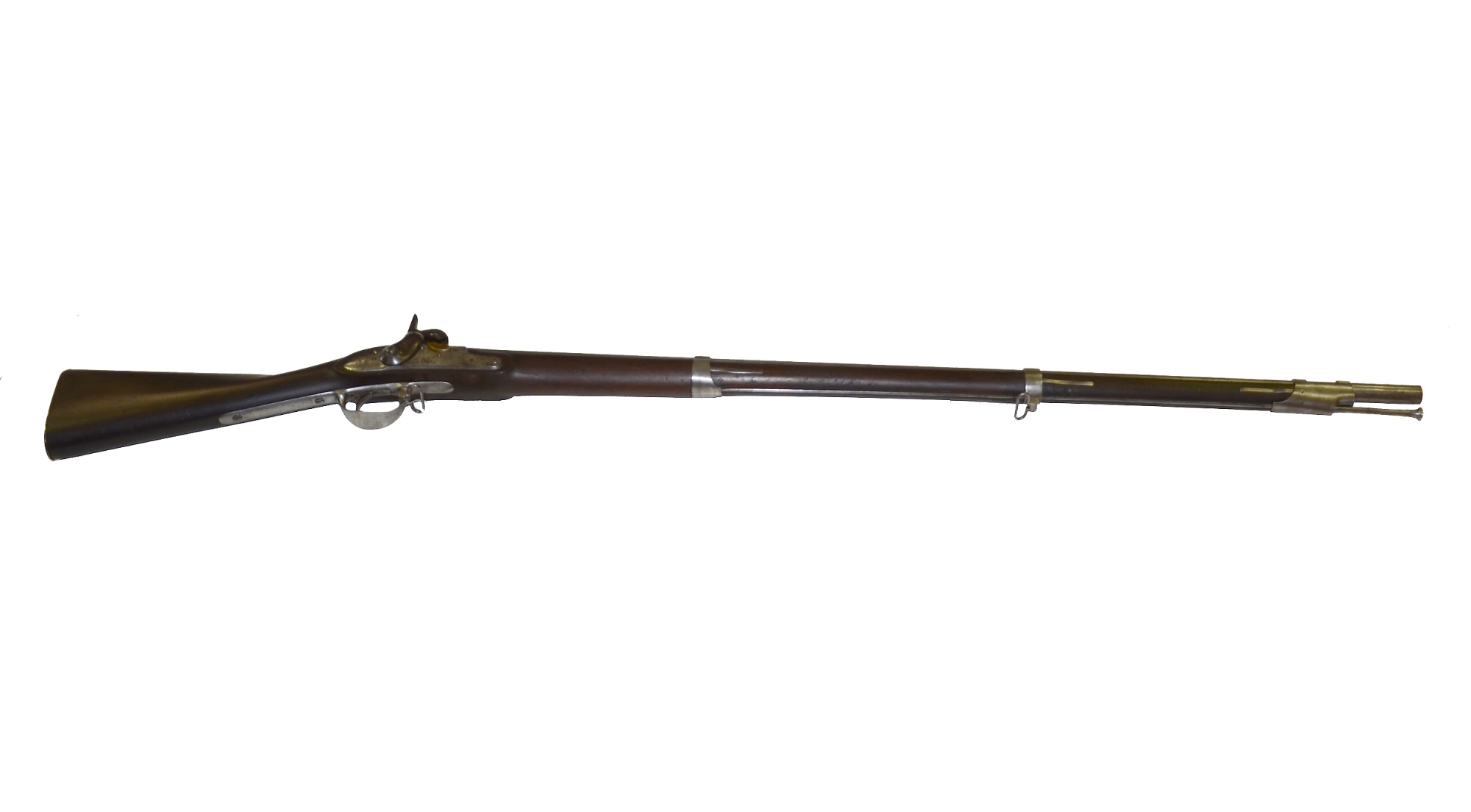site search
online catalog
MODEL 1816 CONVERSION BY P & E W. BLAKE DATED 1826

$1,795.00 SOLD
Quantity Available: None
Item Code: 123-7270
In Flayderman’s this .69 smoothbore is known as the Whitney 1822 Contract Musket, 1st contract. This long arm was produced under two Government contracts from 1822-1841. Due to the death of Eli Whitney Sr. the first delivery was not made until 1826.
The stock is made of dark walnut with an oiled finish. The overall condition of the wood is good. There are some small pry marks just behind the first barrel band. It appears that this band became stuck and someone tried to help it a long by use of a flat tool. These are small marks and do not really detract too much. There is a closed crack running approx. 1.75 inches from the front heel of the lock plate. There is also a small surface chip just forward of the trigger guard. The left side of the stock has a crisp inspector’s stamp of “JC” which stands for James Carrington who was a known Whitney inspector. There is also an “H 49” stamped just forward of the butt plate tang and a very light “JA” behind the trigger guard. The rest of the wood is fairly smooth and in good condition.
All the iron surfaces are bright and show signs of a light cleaning. The lock is marked below the remains of the brass powder pan and forward of the hammer with “US” and “P & E. W. BLAKE” while behind the hammer is “NEW HAVEN 1826.” The top of the barrel at the breech is marked “US JC”. There is also a proof mark of a “P” in a circle while the barrel tang is marked “1826.” The nipple is the original with some moderate pitting around its base and the barrel breech. The rest of the barrel is semi-bright with very light scattered mottling. There is a bayonet lug on the top of the barrel approx. 1.25 inches from the muzzle. All three barrel bands are present with the nose band having a brass blade site attached at the top. The iron butt plate is marked on the tang with a clear “US.” The ramrod is the proper button type and is full length with the threads at bottom. The two sling swivels are also present. One is attached to the middle band while the other is attached to the trigger guard. All screws are original to the piece and show little wear.
The action is good but feels a bit tight. The hammer holds at half-cock and full-cock and falls properly when the trigger is squeezed.
Being a smoothbore there is no rifling to report on but the bore could stand a cleaning.
Overall this is a good solid example of a Model 1816 that has been converted to percussion.
DISCLAIMER: All firearms are sold as collector's items only - we do not accept responsibility as to the shooting safety or reliability of any antique firearm. All firearms are described as accurately as possible, given the restraints of a catalog listing length. We want satisfied customers & often "under" describe the weapons. Any city or state regulations regarding owning antique firearms are the responsibility of the purchaser. All firearms are "mechanically perfect" unless noted, but again, are NOT warranted as safe to fire!
~~~~~~~~~~~~~~~~~~~~~~~~~~~~~~~~~~~
THIS ITEM, AS WITH ALL OTHER ITEMS AVAILABLE ON OUR WEB SITE,
MAY BE PURCHASED THROUGH OUR LAYAWAY PROGRAM.
FOR OUR POLICIES AND TERMS,
CLICK ON ‘CONTACT US’ AT THE TOP OF ANY PAGE ON THE SITE,
THEN ON ‘LAYAWAY POLICY’.
THANK YOU!
Inquire About MODEL 1816 CONVERSION BY P & E W. BLAKE DATED 1826
For inquiries, please email us at [email protected]
Most Popular
Historical Firearms Stolen From The National Civil War Museum In Harrisburg, Pa »
Theft From Gravesite Of Gen. John Reynolds »
Cavalry Carbine Sling Swivel »
Fine Condition Brass Infantry Bugle Insignia »
featured item
SCARCE NEW MODEL 1865 SHARPS STILL IN PERCUSSION NEAR FACTORY NEW
There are no appreciable differences between the NM1863 and NM1865 Sharps other than the stamped model designation by the company, and its occasional absence, which some have speculated was due to worn out or broken old dies, or was a marketing ploy… (490-2531). Learn More »















